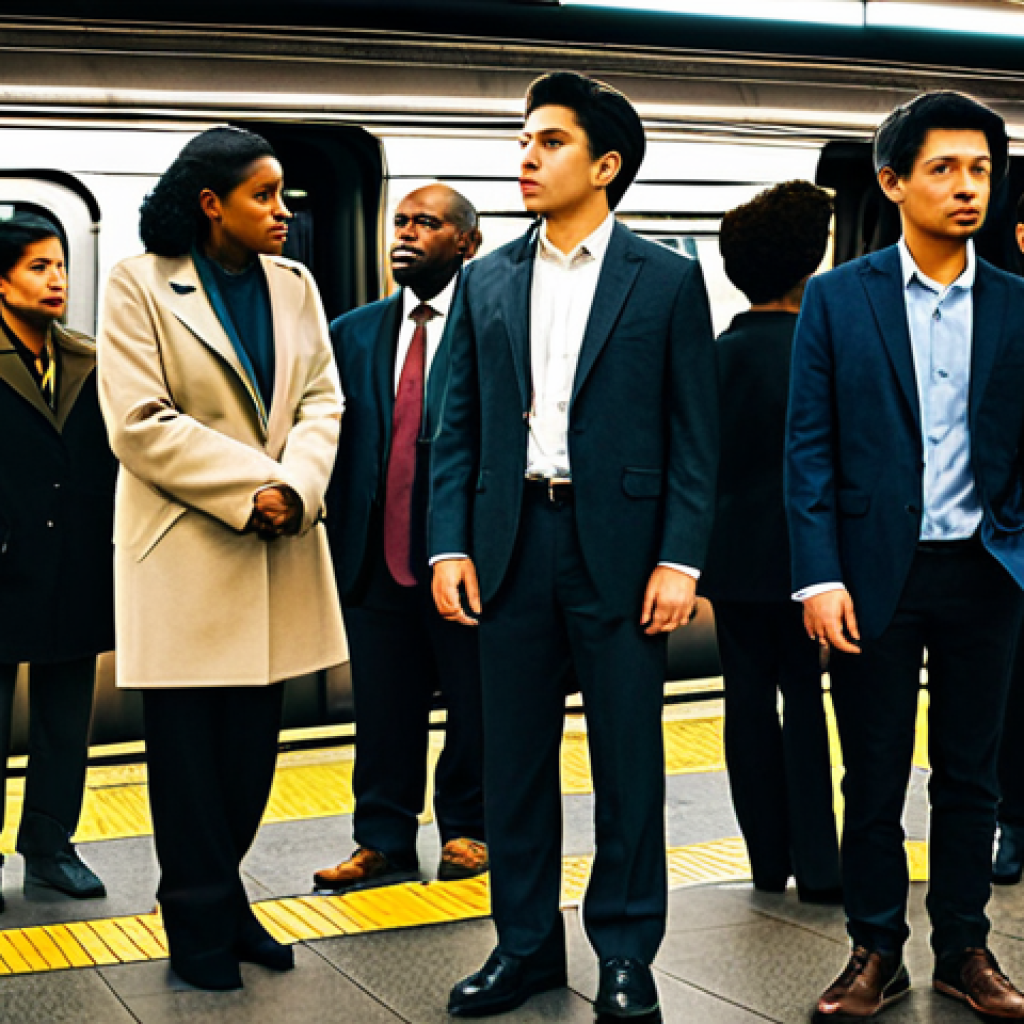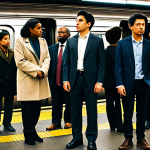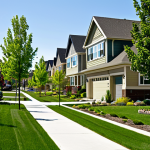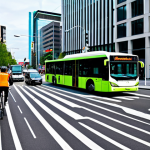Ever wondered why some cities thrive while others struggle? That’s where urban economics comes in, trying to unpack the complex interplay of location choices by firms and households, land use patterns, and the overall economic health of a metropolitan area.
I’ve always found it fascinating how even seemingly small policy decisions can have ripple effects throughout an entire city, impacting everything from housing affordability to job growth.
The latest trends suggest a shift towards sustainable urban development and leveraging tech to create smarter, more resilient cities. Moreover, with the rise of remote work, the conventional wisdom on urban density is being re-evaluated, potentially leading to a reshaping of city landscapes in the years to come.
It’s a constantly evolving field, driven by real-world challenges and innovative solutions. Let’s explore this further in the article below!
Okay, I understand. Here’s the blog post content:
The Urban Commute: More Than Just Getting From A to B
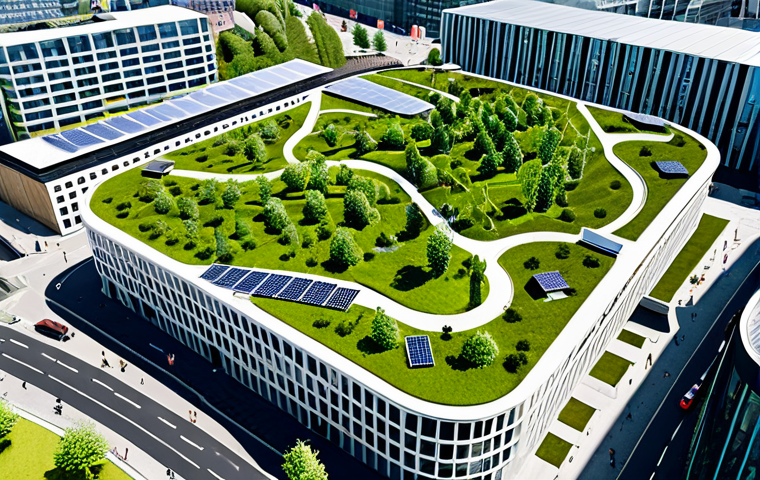
Let’s face it, the daily commute is something most of us love to hate. But in urban economics, it’s a critical factor shaping where people choose to live and work. I remember when I first moved to Chicago, I was determined to live downtown, right in the heart of everything. The reality of the rent prices quickly forced me to look further afield. Then came the brutal awakening of the ‘L’ train commute during rush hour – a sardine can experience I wouldn’t wish on anyone. It made me seriously re-evaluate what I was willing to sacrifice for that “perfect” location.
1. The Trade-off Tango: Space vs. Time
It really boils down to a trade-off. Do you want more space for your money, even if it means a longer commute? Or are you willing to pay a premium to live closer to the action, cutting down on travel time but potentially sacrificing square footage? It’s a deeply personal decision, and one that urban economists spend a lot of time analyzing. They look at things like transportation costs (not just money, but also time, stress, and the opportunity cost of not doing something else), housing prices at varying distances from the city center, and the types of jobs available in different locations.
2. The Suburban Sprawl Story
The rise of suburban sprawl is a direct result of this trade-off. As cities become more expensive, people are pushed further out in search of more affordable housing. This, in turn, creates a greater demand for transportation infrastructure, leading to more roads, highways, and public transit options. It’s a complex, self-perpetuating cycle. When I visited Atlanta a few years back, I was shocked by the sheer scale of the suburbs. It seemed like endless miles of housing developments, all connected by a massive highway system. It really highlighted the impact of urban economics on the physical landscape.
The Housing Puzzle: Supply, Demand, and a Whole Lot of Headaches
Ah, housing. The bane of many urban dwellers’ existence. It’s a never-ending source of debate, frustration, and often, financial strain. I’ve watched friends struggle for years, pouring their savings into down payments only to find themselves in bidding wars for properties that barely meet their needs. It’s a crazy market out there, and understanding the underlying economic forces at play can at least help you make sense of the madness.
1. The Supply Side Squeeze
One of the biggest problems in many cities is a lack of housing supply. There simply aren’t enough homes to meet the growing demand, which drives up prices. Zoning regulations, building restrictions, and NIMBYism (Not In My Backyard) all contribute to this problem. I remember reading about a proposed apartment building in my neighborhood that was ultimately blocked by local residents who were concerned about increased traffic and noise. While I understood their concerns, it was frustrating to see a potential solution to the housing shortage get shot down.
2. The Demand-Side Drivers
On the demand side, factors like population growth, job creation, and interest rates all play a role. When more people move to a city, the demand for housing increases. When the economy is strong and more jobs are created, people have more money to spend on housing. And when interest rates are low, it becomes more affordable to buy a home. All these factors can combine to create a perfect storm of high housing prices.
3. The Affordability Crisis
The result of this supply-demand imbalance is an affordability crisis in many cities. It’s becoming increasingly difficult for ordinary people to find decent housing that they can afford. This has a ripple effect on other aspects of life, from healthcare to education. When people are struggling to pay rent or make mortgage payments, they have less money to spend on other necessities. I have a colleague who’s considering moving out of San Francisco because the cost of living is just too high. It’s a shame, because she loves her job and the city itself, but she just can’t justify the expense anymore.
The Role of Infrastructure: The City’s Backbone
Think of infrastructure as the arteries and veins of a city, the unsung hero that keeps everything flowing. From roads and bridges to public transportation and utilities, it’s the foundation upon which urban life is built. When infrastructure is well-maintained and efficient, it can boost economic growth, improve quality of life, and make a city more attractive to residents and businesses. But when it’s neglected or outdated, it can become a major drag on the economy.
1. Transportation Networks
Efficient transportation networks are essential for connecting people to jobs, goods to markets, and businesses to customers. A well-designed public transportation system can reduce traffic congestion, improve air quality, and make it easier for people to get around without a car. I’ve always been impressed by the subway system in New York City, even though it can be crowded and sometimes unreliable. It’s a testament to the importance of investing in public transportation.
2. Utility Systems
Reliable utility systems, such as water, electricity, and sewage, are also crucial for urban life. Imagine what it would be like to live in a city without clean water or electricity. It would be virtually impossible to run a business or maintain a household. These systems are often taken for granted, but they are essential for the smooth functioning of a city. There was a major water main break in my neighborhood a few years ago, and it was a real eye-opener to see how dependent we are on these essential services.
The Impact of Zoning Laws: Shaping the Cityscape
Zoning laws are like the rulebook for how land can be used in a city. They dictate things like what types of buildings can be built in different areas, how tall buildings can be, and how much parking is required. Zoning laws can have a profound impact on the shape and character of a city, influencing everything from housing density to commercial development.
1. Single-Family Zoning and Sprawl
One of the most controversial aspects of zoning is single-family zoning, which restricts certain areas to detached houses on large lots. This type of zoning has been criticized for promoting suburban sprawl, segregating communities, and driving up housing costs. It essentially limits the supply of housing and makes it more difficult for people to live in certain areas. I’ve noticed in my hometown, the areas with the most restrictive zoning laws also tend to be the most expensive and exclusive.
2. Mixed-Use Zoning and Urban Revitalization
On the other hand, mixed-use zoning, which allows for a mix of residential, commercial, and industrial uses in the same area, can promote urban revitalization, create more vibrant communities, and reduce reliance on cars. It encourages people to live, work, and play in the same neighborhood, which can lead to a stronger sense of community and a more sustainable urban environment.
The Rise of the Gig Economy: Changing the Urban Landscape
The gig economy, with its army of freelancers, independent contractors, and on-demand workers, is reshaping the urban landscape in profound ways. Coffee shops have become mobile offices, co-working spaces are popping up on every corner, and the traditional 9-to-5 workday is becoming a relic of the past. This shift is creating both opportunities and challenges for cities.
1. The Demand for Flexible Workspaces
The gig economy has fueled the demand for flexible workspaces, such as co-working spaces and shared offices. These spaces provide freelancers and remote workers with a place to work, collaborate, and network with others. They also offer amenities like high-speed internet, printing, and meeting rooms, which can be essential for running a business. I’ve seen several co-working spaces open up in my neighborhood in the past few years, and they always seem to be bustling with activity.
2. The Impact on Transportation Patterns
The gig economy is also changing transportation patterns in cities. With more people working from home or co-working spaces, there is less demand for traditional commuting. This can reduce traffic congestion, improve air quality, and make it easier for people to get around. However, it can also lead to a decline in ridership on public transportation, which can create financial challenges for transit agencies.
The Power of Public Amenities: Creating Livable Cities
Parks, libraries, community centers, and public art – these are the things that make a city feel like home. They provide spaces for recreation, relaxation, and social interaction. They contribute to the overall quality of life and make a city more attractive to residents and businesses. I’ve always been drawn to cities with vibrant public spaces, where people can gather, connect, and enjoy the urban environment.
1. The Economic Benefits of Parks
Parks are not just pretty green spaces; they also have significant economic benefits. They can increase property values, attract tourists, and boost local businesses. Studies have shown that homes located near parks tend to be worth more than homes that are not. Parks also provide opportunities for recreation and exercise, which can improve public health and reduce healthcare costs. I remember reading about a park in New York City that was credited with revitalizing a struggling neighborhood, bringing new businesses and residents to the area.
2. The Social Benefits of Libraries
Libraries are more than just places to borrow books; they are community hubs that provide access to information, education, and social services. They offer free computer access, job training, and literacy programs. They host community events, book clubs, and workshops. In today’s digital age, libraries are more important than ever as they help bridge the digital divide and provide opportunities for lifelong learning.
Sustainable Urban Development: Building for the Future
The future of urban economics is inextricably linked to the concept of sustainable urban development. As cities continue to grow, it’s becoming increasingly important to build in a way that is environmentally responsible, economically viable, and socially equitable. This means reducing carbon emissions, conserving resources, promoting public transportation, and creating affordable housing. It’s a complex challenge, but one that cities must embrace if they want to thrive in the long run.
1. Green Buildings and Energy Efficiency
Green buildings, which are designed to minimize their environmental impact, are becoming increasingly popular in cities around the world. These buildings use energy-efficient materials, renewable energy sources, and water-saving technologies. They reduce carbon emissions, conserve resources, and create healthier indoor environments. I recently visited a green building in Seattle that had solar panels on the roof, a rainwater harvesting system, and a green roof. It was a fascinating example of how technology can be used to create more sustainable urban environments.
2. Public Transportation and Reduced Car Dependence
Promoting public transportation is another key element of sustainable urban development. When people rely less on cars, they reduce traffic congestion, improve air quality, and lower carbon emissions. Cities can encourage public transportation by investing in bus and train systems, creating bike lanes, and implementing congestion pricing policies. I have been to Copenhagen that has invested heavily in public transportation and cycling infrastructure, and it’s one of the most sustainable cities in the world.
| Factor | Impact on Urban Economics |
|---|---|
| Commute Time | Influences housing prices and location choices; longer commutes decrease quality of life. |
| Housing Supply | Constrained supply leads to higher prices and affordability crises. |
| Infrastructure | Essential for economic growth; poor infrastructure can hinder development. |
| Zoning Laws | Shapes land use and can promote or restrict housing density. |
| Gig Economy | Changes demand for workspaces and alters transportation patterns. |
| Public Amenities | Enhance quality of life and attract residents and businesses. |
| Sustainability | Critical for long-term viability; green buildings and public transportation are key. |
In Conclusion
Understanding the complexities of urban economics is crucial for anyone living in or planning to move to a city. From weighing the costs of commuting to navigating the housing market, these economic factors shape our daily lives in countless ways. By being informed and engaged citizens, we can work together to create more sustainable, equitable, and livable cities for all.
Useful Tidbits to Keep in Mind
1. Check out local government websites for zoning regulations and development plans in your area.
2. Use online tools like Zillow or Redfin to compare housing prices and commute times in different neighborhoods.
3. Explore public transportation options and consider using bike-sharing programs to reduce your carbon footprint.
4. Support local businesses and community organizations that are working to improve the quality of life in your city.
5. Stay informed about local elections and vote for candidates who prioritize sustainable urban development.
Key Takeaways
Urban economics is about trade-offs: space vs. time, affordability vs. proximity. Housing is a major factor, with supply and demand imbalances driving affordability crises. Infrastructure is the backbone of a city, and zoning laws shape its character. The gig economy and public amenities are transforming urban landscapes. Sustainable development is crucial for the future, focusing on green buildings and public transportation.
Frequently Asked Questions (FAQ) 📖
Q: How can urban economics help a city deal with a housing affordability crisis?
A: From what I’ve seen, urban economics offers a framework to analyze the factors driving housing costs, like zoning regulations that limit supply or transportation policies that affect land values.
For instance, a city might use economic models to simulate the impact of allowing more high-density construction near transit lines. I remember reading about a case study in San Francisco where easing zoning restrictions in certain areas led to a significant increase in housing development, although it’s a complex issue with no easy fixes.
It’s about understanding how different policies affect the supply and demand curves for housing in a given market.
Q: You mentioned sustainable urban development. What specific technologies or strategies are cities using to become more “smart” and resilient?
A: Oh, it’s fascinating! I’ve noticed cities are increasingly adopting things like smart grids for more efficient energy distribution, sensor networks to monitor traffic flow and air quality, and data analytics platforms to optimize resource allocation.
Take London, for example. They’ve implemented congestion pricing and invested heavily in public transportation, using real-time data to manage traffic and encourage more sustainable modes of travel.
I was reading the other day about how some cities are even experimenting with autonomous vehicles for public transportation, but that’s still in its early stages.
Q: How is the rise of remote work impacting urban economics and the future of cities?
A: That’s the million-dollar question, isn’t it? Personally, I think it’s potentially reshaping everything. With more people working remotely, the demand for office space in central business districts could decline, leading to lower commercial property values.
On the other hand, smaller cities and suburban areas might see an influx of new residents, boosting their local economies. I was talking to a friend in Austin who said he’s noticed more people moving there from California due to the lower cost of living and greater flexibility in work arrangements.
It’s creating both challenges and opportunities for cities, and urban economists are scrambling to understand the long-term implications.
📚 References
Wikipedia Encyclopedia
구글 검색 결과
구글 검색 결과
구글 검색 결과
구글 검색 결과
구글 검색 결과
